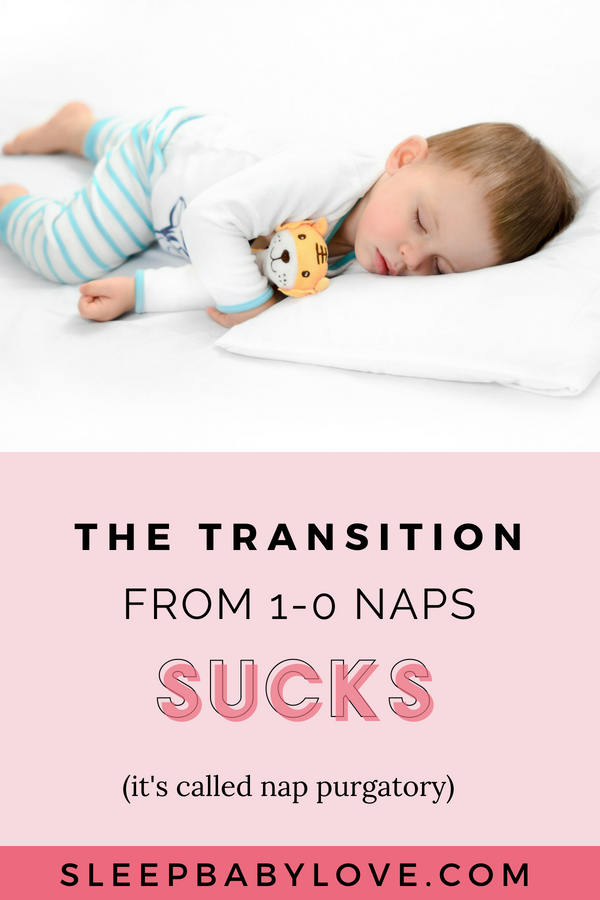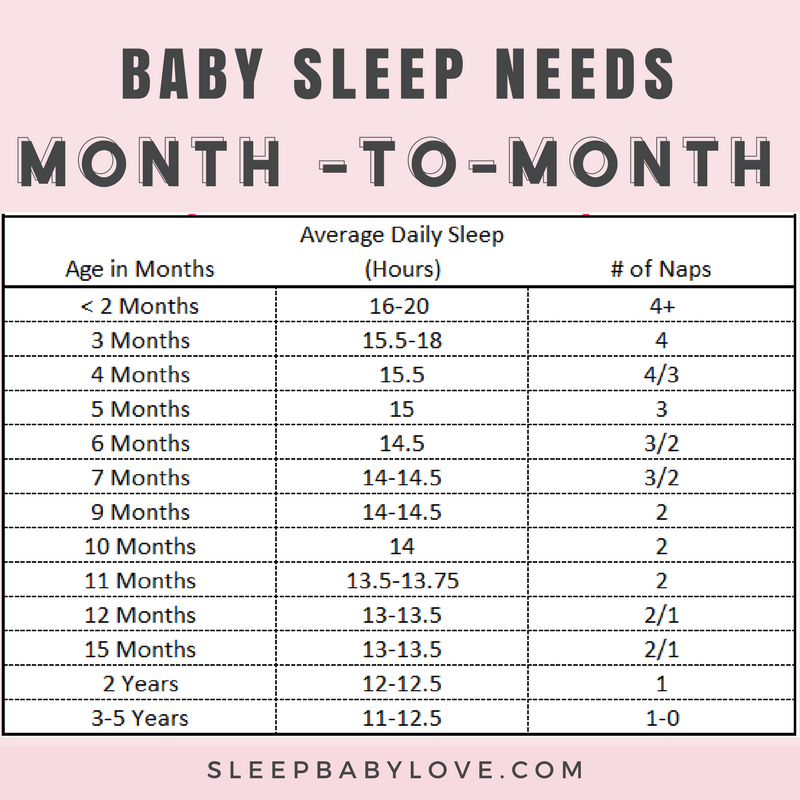Transition from 1 Nap to No Nap – It’s Called Nap Purgatory!
From here on out, I expect that everyone is going to refer to that yucky, dreaded transition between your child needing a nap and not needing a nap as… nap purgatory! (OK, I get that not everyone is going to say it, but a girl’s gotta dream). The transition from 1 nap to no nap is pretty tough. Quite blunt, nap purgatory SUCKS.
Tell me, oh tell me, do any of these sound familiar? The reasons why the transition from 1 nap to 0 naps is anything put a picnic:
- You are never sure if your child is going to nap or not (forget about making plans).
- Your child is too old to nap every day, but too young to not nap every day.
- Your child is not tired in the early afternoon, but a hot-mess by the late afternoon (conveniently right as you are trying to put dinner on the table).
- Your child wakes up cranky like a bear when they take too late of an afternoon nap.
- Your child looks at the car and falls asleep making it IMPOSSIBLE to go anywhere in the afternoon.
- Even if that little car nap is less than 5 minutes, you can forget about getting your child to bed at night.
- When your toddler naps, it is difficult to get your child sleeping before 9 or 10 at night. (Hey, what happened to a peaceful bedtime?)
- Nap time is the time that YOU get things done (insert visual of all the amazing things you do when your kids nap). You don’t want to give it up.
Yup, you’re in Nap Purgatory.
Unlike other nap transitions (4-3, 3-2 and 2-1) that could last weeks or a couple of months, this is the longest transition of all. It’s the mother of all nap transitions. Imagine, you may be in nap purgatory for a year or more (eek)!
Right around 3-5 years old, we see that toddlers naturally give up their naps. For some children, you may see signs of an earlier transition tied to neurological development.
Sleep science aside, for some kids the transition into the “no nap club” is easy-peasy, but not for everyone. Oh no, not everyone (including me and my 4.5 year old). Our transition is long and arduous. Just like every child has their own unique sleep needs, we find that the transition can go smooth for some but others it’s not. It’s normal and very much a part of the ups and downs of raising a toddler or preschooler.
For many parents, the biggest issue with keeping or eliminating your child’s nap is the effect that it can have on bedtime. The bedtime shenanigans, the constant curtain calls not to mention taking forever to fall asleep, all make nap purgatory so special. It’s when all the sudden your beautiful child gets all crazy and resists what is most parents favorite part of the day (bedtime)!
As parents we can’t force our children to sleep, but we CAN respect our child’s need for sleep with these tips:
Take the Stress Away
Once your child starts fighting their nap, the worst way to get them to nap is to make them nap. It’s OK, if your child misses it a day or two in a row. But you should still offer a nap . Just take the pressure off. Words like “time for your rest time” go over better than “you better nap”. If they choose to nap, it’s their choice but you’re offering the opportunity each day.
Find the Right Nap Length
So many parents think that once they start getting bedtime battles, it is time to ditch the nap. Hey, there were viral articles spreading the message that your child doesn’t need a nap after age 2. But don’t take those headlines at face value since giving up a nap too early can cause developmental or behavioral issues. When you start getting challenges (picture a huge drawn-out war to get your child to bed at night), it’s time to play with the nap timing first.
Many toddlers have naps that are 2 to 3 hours long which are too long as daily sleep needs decrease. First, start capping the nap down by 15 minutes from the natural duration. Or, you can start at 1.5 hours and see the difference that makes. From there you can cap further, all the way down to 1 hour or 45 minutes. Think slow and steady when you’re making changes to your child’s natural body clock. Every three days, you can cap the nap further to find the right time.
Since I’m a huge fan of the right sleep environment to get great naps in the first place, I give you permission to go against my advice of a dark room. A natural way to shorten the nap, is to raise the shades in your child’s room. You don’t want the room super bright (since it may prevent your child from falling asleep in the first place) but, natural light coming through the windows can be an easy alarm clock.
Play with Nap Timing
Similar to the nap length, you have to find the right time for your child to nap. If your toddler or preschooler, magically always used to fall asleep at 1pm and now you see that they are messing around for 15 – 30 minutes, it’s OK that the nap may naturally shift. 1:30 or 2pm may be your new optimal nap time. But, now you have to focus on the time that your child’s nap ends. If she wakes up like a cranky bear, the timing may be a little later and sometimes that later wakeup means even more bedtime shenanigans. The nap timing definitely will affect bedtime so play with it find the right time for your child. As a general rule of thumb for a 3 or 4-year-old, try to start the nap no later than 2:00pm and by 2:30 ish, don’t allow your child to nap if it messes with the night. If your child does fall asleep, end the nap around 3:30pm to preserve a reasonable bedtime.
Offer Rest Time
With all the hustle and bustle, you will actually want your child to have some downtime to get through the day. Help your child reset from the busy day by offering your child to rest in their room. Pinterest has a ton of great ideas to create busy bags and quiet bags as seen here. If you’re not in the DIY mood, you can buy this great craft box that can entertain your child and give them the downtime they need.
Don’t be stressed if your child doesn’t nap. You can’t make someone sleep, but you can make your child rest.
Figure Out How Often to Nap
Before you get rid of all naps, figure out the right number of naps that your child needs each week. If getting rid of your child’s nap every day leads to a hot mess 3-year-old and his wakeups continue to get earlier, it’s a good indication that your child needs a nap every couple days or once a week. Try and figure out the number of naps per week that is optimal for your child. To start, I suggest trying to nap your child every other day or every second day to start.
And, if you have the kid that begs to take a nap, it’s OK to offer one even if you dropped the naps. Consider that a catch-up nap is a nice way to fuel the sleep tank. As long as bedtime issues, don’t creep back, continue with the catch-up nap as needed.
You can’t make your child sleep, but you can make them rest.
Focus on an Early Bedtime
I bet you know that when your toddler stops napping that they need an earlier bedtime. Right? You are such a smarty pants. Keeping a static bedtime after giving up the nap is probably the easiest way to have your child become overtired (leading to night wakes and early bedtimes). Finding the right bedtime for your non-napping child takes a little bit of trial and error but figuring out the optimal bedtime is the first step.
Find the Best Bedtime
Most toddlers require an average daily sleep requirement of 10 – 12 hours. Focus on the right amount of total sleep that your child needs then subtract their natural wakeup time to figure out the optimal bedtime. Yes, I just put math into sleep. Here it is in simpler terms.
Bedtime = Wakeup Time – Amount of Needed Sleep (working backwards)
It’s so easy to just say that your child needs only 10 hours of total sleep but make sure you are honest with yourself. If your child is happiest and has the best behavior with 11 or 12 hours of overnight sleep, go with the higher number. Getting an early bedtime isn’t easy especially when you have a tired toddler at bedtime. A consistent bedtime routine will help set the expectations of sleep and make sure that you start your process real early to hit a bedtime at 6pm or 7pm.
Focus on the Bright Side
Once you are through Nap Purgatory, you will enjoy the time that you and your child can spend together throughout the day. No running home to take naps and soon your child won’t fall asleep in the car. You will if you have a good ol’ well rested child. In case you’re right smack dab in the transition from 1 nap to no nap, make sure you focus on all the tips above. If all else fails, drink lots of wine!
How did the transition to no naps go for your children? Anyone else in the middle of nap purgatory? I was too! Click here to Download your FREE Toddler (and Beyond) Checklist for a smooth as butter bedtime routine.



